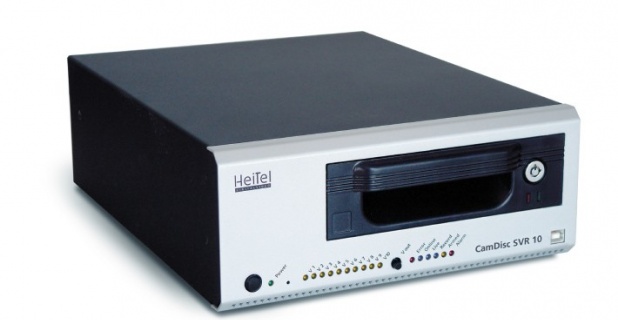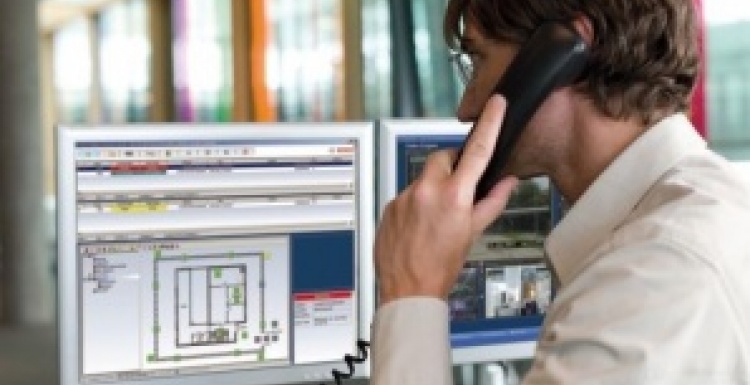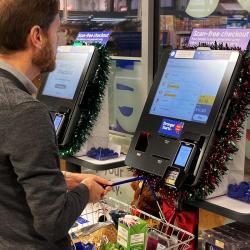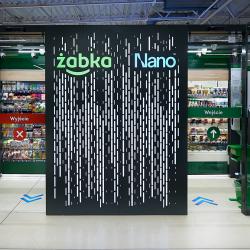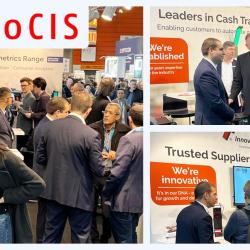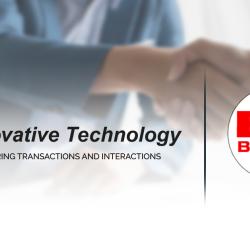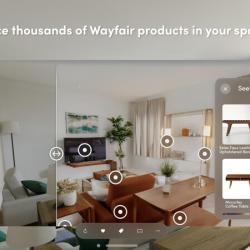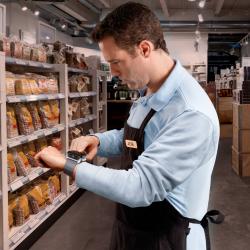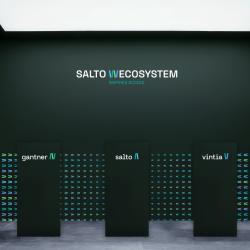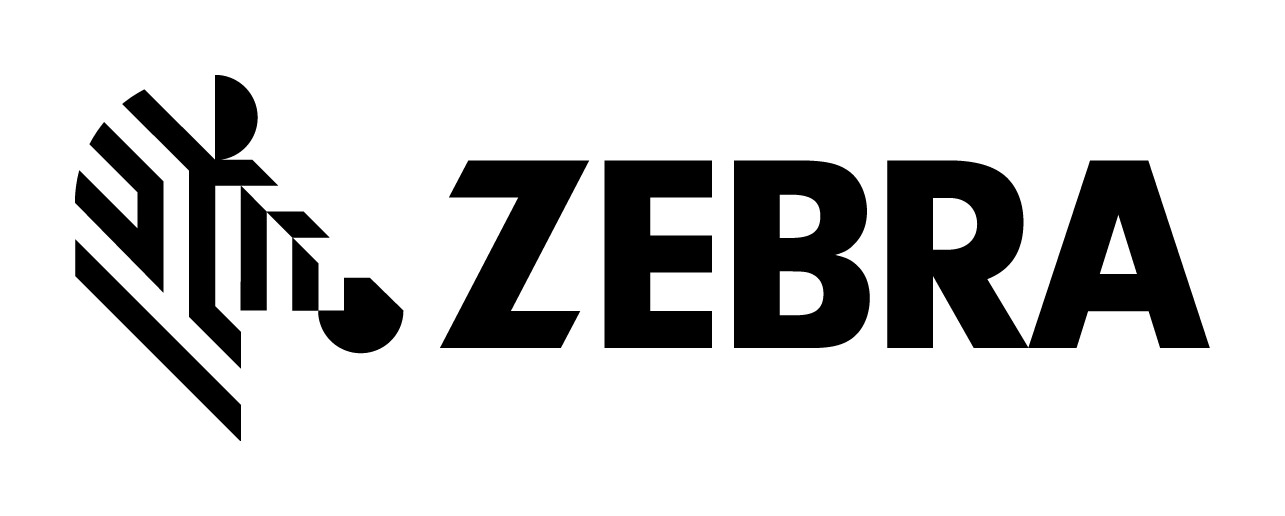Report • 26.06.2011
Green CCTV: Marketing Fad or Serious Approach?
The topics of environmental friendliness and sustainability have been part of the current discourse in society and business with an increasing intensity for years. At least since the CEBIT 2010, the ecological footprint has also been the increasing focus of users and manufacturers in IT. In the security technology sector, the sub-aspect of power consumption has been at the fore for some time already: in particular in the area of electronic security technology, it has always been necessary that energy-saving components and parts are used in order to keep the capacity of the mandatory, battery-powered emergency supply units low and thus acceptable in terms of price.
Green marketing statements are now becoming fashionable in the CCTV sector, but what is behind this? What approaches should manufacturers be pursuing in the sense of green CCTV and what can the environmentally friendly user look for when choosing CCTV products?
Energy balance and embedded system design
Manufacturers of CCTV systems were previously not forced to consider the power consumption of their products. Guidelines which made the use of particularly energy-saving components were more of an exception. The strongly evolutionary development in the CCTV area with increasingly shorter innovation cycles has, on the contrary, resulted in the increasing use of high-performance, but energy-intensive system technology. The good news is that products with PC-based components are being increasingly used for central system components, such as video recording systems (DVR). In the medium term, an improved energy balance can be expected in the IT area, and therefore in the CCTV area, due to the general tendency toward using technologies with reduced power consumption.
CCTV systems in embedded system design, on the other hand, use components and elements which have a lower power consumption by design, which results in a significantly better energy balance in such systems on the whole. A look at the technical data of these systems makes the difference clear: The power consumption of a PC-based video recording system is often significantly more than 100 watts. Systems with energy-saving embedded system design and optimised for security applications show far lower values.
| PC-based DVR | DVR in embedded system design | |
| Power consumption | 135 W | 15 W |
| Energy consumption per year | 1,183 kWh | 131 kWh |
| Energy consumption over 5 years | 5,913 kWh | 657 kWh |
| Energy costs over 5 years (at 0.22 €/kW) | € 1,300 | € 145 |
Example calculation on the savings through a DVR system over a period of 5 years
At assumed (but improbable) stable energy costs, there will be savings of over 5,000 kWh or € 1,155 result for a system over a period of 5 years. The energy consumption and the arising operating costs can therefore be reduced dramatically. A finding which should be particularly interesting to chain stores, because here the savings potential of a branch can be multiplied by the number of branches. For the equipment of say 400 branches, this results in a reduction of energy consumption by more than 2,000,000 kilowatt hours or cost savings of more than € 450,000 over the 5 year observation period.
Mains adapters offer further potential to save energy, because security technology systems are usually operated with 12 v DC. Corresponding energy supply units must be designed in such a way that current fluctuations in the 230 V power supply in the range of -15% to +10% of the nominal voltage do not negatively affect the function of the security technology. Classic mains adapters, which are fitted with conventional transformers and classic voltage controllers, often result in an unfavourable efficiency factor. This is sometimes only 75%. As a result, a large part of the energy consumed is converted into heat, which must be discharged via aluminium lines. Often, additional, electromechanical ventilators are required to keep the system at operating temperature. Contemporary security systems are therefore fitted with switching regulators, which have an efficiency factor of more than 90% and produce less heat due to lower power loss.
Long lifecycle and sophisticated service improve the ecological footprint
A good energy balance is, however, only a partial aspect of the green CCTV concept. A product’s average lifecycle is an equally important factor to the ecological footprint. In the world of IT, a period of 3 to 5 years is now assumed and accepted as the lifecycle and replacement cycle. A mandatory replacement of systems is usually then carried out in order to pre-empt the failure of central components and associated operational limitations. In the sense of a proportionate ecological footprint, this is a bad approach, but certainly a trend which manufacturers and system suppliers do not necessarily oppose for obvious reasons. This strategy is also increasingly being applied to central CCTV systems.
A high level of reliability combined with a long lifecycle should therefore be the focus when developing security technology. As a rule, a MTBF (Mean Time Between Failures) of at least 5 years should be the target. An average lifecycle of even 10-15 years is assumed during the construction of components that are not exposed to mechanical wear and tear. A longer lifecycle or a higher MTBF value significantly improve the ecological footprint and reduce operating costs in turn.
Hard drives (and other parts subject to wear) can usually not meet these requirements, because their wear and tear when used in CCTV systems is several times higher than in classic server or PC operation: a PC running in the private domain runs on 30 days a month, typically for approx. 3 hours a day. The duration of hard drive access compared to operating time is approx. 10%. The duration of write/read cycles of the hard drive is therefore approx. 9 hrs/month. A PC running in the commercial domain runs on 20 days a month, for approx. 8 hours a day. For the same proportion of the operating time, of 10%, the entire access time amounts to about 16 hours a month.
In video surveillance, 24/7 use must be assumed, i.e. the system runs 720 hours a month. The hard drive is put under a heavier load during video recording, typically 90% hard drive access time, meaning 648 hours a month! The load on hard drives in a CCTV system is significantly higher compared to conventional use in IT.
Therefore, replacement hard drives which can be easily replaced in the event of a defect should generally be used in video systems, in order to meet the lifecycle and functional security requirements. The early failures typical of hard drives can be reduced to an acceptable minimum through quality controls conducted at the CCTV system. Strictly and exclusively hard drives which meet the increased demands of the CCTV domain can be used; standard hard drives in the PC trade are not recommended.
Despite higher product quality, electronic security systems occasionally see random failures during the average product lifecycle. So-called early failures can however be partly prevented through quality controls and burn-in tests. The often standard practice of the manufacturers is, however, to entirely replace defective components. This may seem cheaper at first glance. Under the aspect of a better ecological footprint, however, repairs are preferable. Therefore, a later “reparability” of the systems must be already considered in the construction stage. Qualified technicians must be available so that demanding repairs can ideally be carried out right down to motherboard level.
Investment protection and continuity are green
The repair of CCTV systems must also be considered under the green CCTV aspect: in particular, the options for remote service, remote diagnosis and remote parameterisation should be established as the standard. These instruments do not just allow a reduction in operating costs, as systems can be functionally maintained up to the latest technological standards for longer through remote updates and so the duration of use will also increase. System availability is also increased and with it the acceptance of the products by operators and users.
The same investment protection is green CCTV approach is also being taken by long-term, continual product development and a consistent modular design of the product range: the operator of a CCTV system is not forced to replace an entire system, but can expand their system on a modular basis in accordance with the latest technical requirements.
Legal requirements and manufacturer's responsibility
The legislator has responded to the increasing spread of disposable electronics and, for instance with the European RoHS Directive on limiting the use of certain hazardous substances like lead, mercury and cadmium, created binding standards for all manufacturers.
But beyond the legal provisions, the responsibility of the individual manufacturers begins with a resource-saving approach to the environment. There are many approaches: short production routes, recycling-compliant construction, reparability, packaging made from recyclable cardboard, giving up printed documentation in favour of electronic documentation.
But whilst a construction-based, positive energy balance and longer lifecycle as well as the investment protection through remote service and a modular product range can be presented as a direct benefit to the customer, giving up elaborate finishing, glossy packaging or printed manuals, for instance, needs a clear argument to the customer. The consumer is, however, particularly in Germany and Europe, willing to choose a green product; all the more, of course, if it is cheaper. Here, the temptation arises to plat fast and loose on the basis of the "environmentally friendly" theme, because the corresponding market statements are rarely regulated or verified. Manufacturers committing to a green CCTV philosophy must therefore argue specifically and clearly and not simply place partial aspects of their products in the green light. Anything different would be a dangerous game with the trust of the consumer in the overall brand.
Ulrich Schwieger, Technical Head, HeiTel Digital Video GmbH
Daniel Krönke, Head of Marketing, HeiTel Digital Video GmbH

